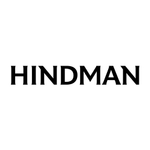[FINE PRESS & LIVRE D'ARTISTE]. -- [KELMSCOTT PRESS]. CHAUCER, Geoffrey. The Works ... now newly imprinted. Edited by F.S. Ellis. Hammersmith: Kelmsco
Lot 69
About Seller
Hindman
1338 West Lake Street
Chicago, IL 60607
United States
Recognized as the Midwest's leading fine art auctioneers, Hindman Auctioneers has built a worldwide reputation based on a full service approach to the auction business tailored to meet the individual needs of our clients. Coming from a variety of educational backgrounds, specialists bring years of e...Read more
Categories
Estimate:
$60,000 - $80,000
Absentee vs Live bid
Two ways to bid:
- Leave a max absentee bid and the platform will bid on your behalf up to your maximum bid during the live auction.
- Bid live during the auction and your bids will be submitted real-time to the auctioneer.
Bid Increments
| Price | Bid Increment |
|---|---|
| $0 | $25 |
| $500 | $50 |
| $1,000 | $100 |
| $2,000 | $250 |
| $5,000 | $500 |
| $10,000 | $1,000 |
| $20,000 | $2,500 |
| $50,000 | $5,000 |
| $100,000 | $10,000 |
About Auction
By Hindman
Oct 8, 2020
Set Reminder
2020-10-08 11:00:00
2020-10-08 11:00:00
America/New_York
Bidsquare
Bidsquare : Selections from the Library of Gerald and Barbara Weiner
https://www.bidsquare.com/auctions/hindman-auctions/selections-from-the-library-of-gerald-and-barbara-weiner-5544
Hindman Bidsquare@hindmanauctions.com
Hindman Bidsquare@hindmanauctions.com
- Lot Description
[FINE PRESS & LIVRE D'ARTISTE]. -- [KELMSCOTT PRESS]. CHAUCER, Geoffrey. The Works ... now newly imprinted. Edited by F.S. Ellis. Hammersmith: Kelmscott Press, 1896.
Folio (424 x 288 mm). Chaucer and Troy types, printed in black and red, woodcut title, borders and initials by C.E. Keates, W.H. Hooper and W. Spielmeyer after William Morris, 87 woodcut illustrations by W.H. Hooper after Edward Burne-Jones. Early 20th-century vellum gilt, spine in seven compartments with 6 raised bands, gilt lettered in second and seventh, yapp edges, uncut, STAMP-SIGNED BY PETER FRANCK (slight even fading to spine); red morocco gilt lettering-piece from previous binding laid in; full morocco folding case. Provenance: Philip Duschnes (booklabel, see below); John Whiting Friel and Helen Otillie Friel (bookplate designed by Rockwell Kent). IN A FINE BINDING FOR DUSCHNES WHICH PETER FRANCK SPOKE OF "WITH PRIDE" (Guild of Book Workers Journal). Franck began his vocation as a binder at age thirteen as an apprentice at his uncle's bindery in Landau. He came to the United States in 1907 and began working as a binder at the Roycroft shop. He bound for the Caxton Printers and Stikeman and Company, before returning to his native Germany in 1920 where he worked for the Bremer Press bindery in Munich. After several years, he returned to New York where he worked again for Stikeman and Company, and later the Blackwell-Bennett Bindery. In 1925, he began working for the printing house of William Edwin Rudge in Mt. Vernon, New York. In 1932, he established his own workshop in Sherman, Connecticut; that same year, he was chosen as a member of the Meister der Einbandkunst, one of the highest honors for a bookbinder. "It was during this period that Peter's finest work was done. He had joined the Guild of Book Workers in 1929 and in 1932 began exhibiting his work" (Lucy Crump, "Peter Franck, American Hand Binder," Guild of Book Workers Journal, Fall 1964, pp.7-8). He bound several copies of Dard Hunter's private press books in full vellum, and "one of each of these is held by the Dard Hunter Museum at the Paper Chemistry Institute in Appleton, Wisconsin [now at the Robert C. Williams Museum of Papermaking at Georgia Tech]" (ibid., p.8). A binding Franck "speaks of with pride is one he did for Philip Duschnes. This is a Kelmscott press complete Chaucer. I quote the catalogue, 'Folio, full vellum, uncut, with vellum overleaf on covers, gilt lettering, six raised bands, with exceptionally fine marble like veining, by Peter Franck.' Incidentally, the price of the above is listed at $1,250" (ibid. p.9). Writing about the process of binding in vellum, Franck notes: "One must be warned in pressing to pay attention to the height of the printing punch, for example the Kelmscot (sic) Press 'Chaucer', where the print and wood-cut illustrations are very deeply impressed. In this case, sufficient hand-made paper stubs must be added before or during the sewing to equalize the height of the punch" (translated by Betsy Palmer, "Vellum Binding," Guild of Book Workers Journal, Fall 1964, p.13). LIMITED EDITION, ONE OF 425 COPIES ON PAPER OF A TOTAL EDITION OF 438. "THE FINEST BOOK SINCE GUTENBERG" (Franklin). The supreme achievement of the forty year artistic collaboration between Morris and Burne-Jones, and of the Kelmscott Press: "the final chapter of co-operation; the venture in which their particular talents are combined for the last time, and to spectacular effect" (Robinson). Earliest plans for the work date to 1891; though the book was announced to Kelmscott Press subscribers in December, the actual printing did not begin until August 1894, and the book was only issued to subscribers in June 1896. Franklin Private Presses p.192; Peterson A40; Robinson William Morris, Edward Burne-Jones and the Kelmscott Chaucer; Sparling 40.
For condition inquiries please contact Gretchen Hause at gretchenhause@hindmanauctions.comCondition
- Shipping Info
-
Please refer to https://hindmanauctions.com/shipping-packing
-
- Buyer's Premium



 EUR
EUR CAD
CAD AUD
AUD GBP
GBP MXN
MXN HKD
HKD CNY
CNY MYR
MYR SEK
SEK SGD
SGD CHF
CHF THB
THB![[FINE PRESS & LIVRE D'ARTISTE]. -- [KELMSCOTT PRESS]. CHAUCER, Geoffrey. The Works ... now newly imprinted. Edited by F.S. Ellis. Hammersmith: Kelmsco](https://s1.img.bidsquare.com/item/l/6932/6932211.jpeg?t=1KddzZ)
![[FINE PRESS & LIVRE D'ARTISTE]. -- [KELMSCOTT PRESS]. CHAUCER, Geoffrey. The Works ... now newly imprinted. Edited by F.S. Ellis. Hammersmith: Kelmsco](https://s1.img.bidsquare.com/item/s/6932/6932211.jpeg?t=1KddzZ)













